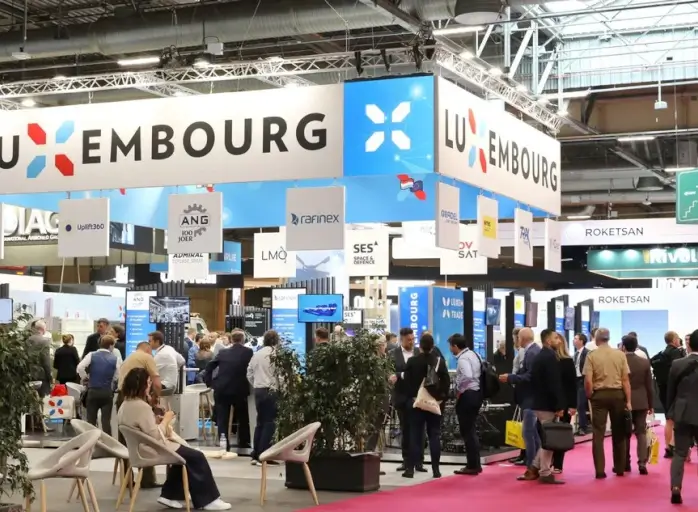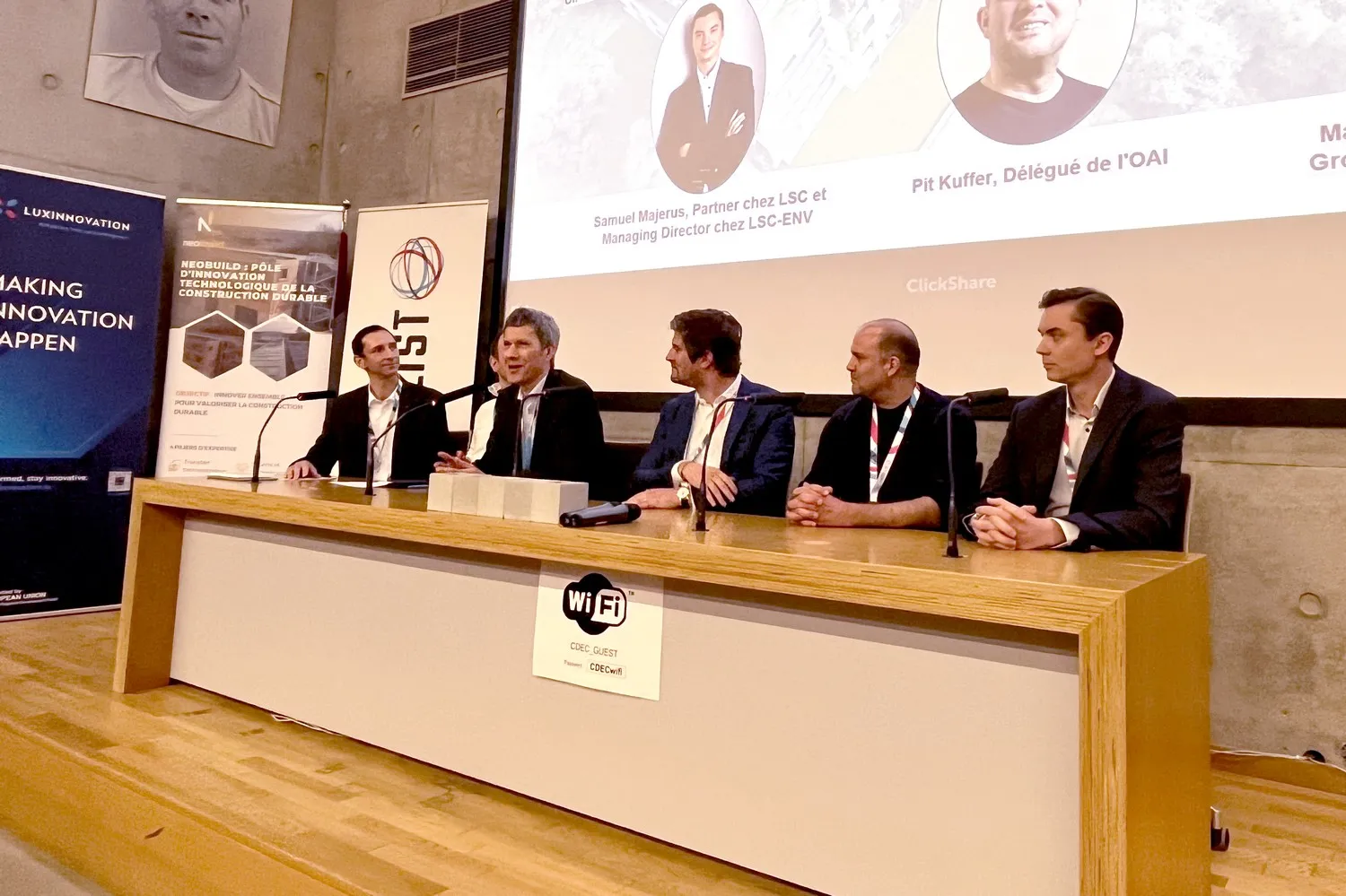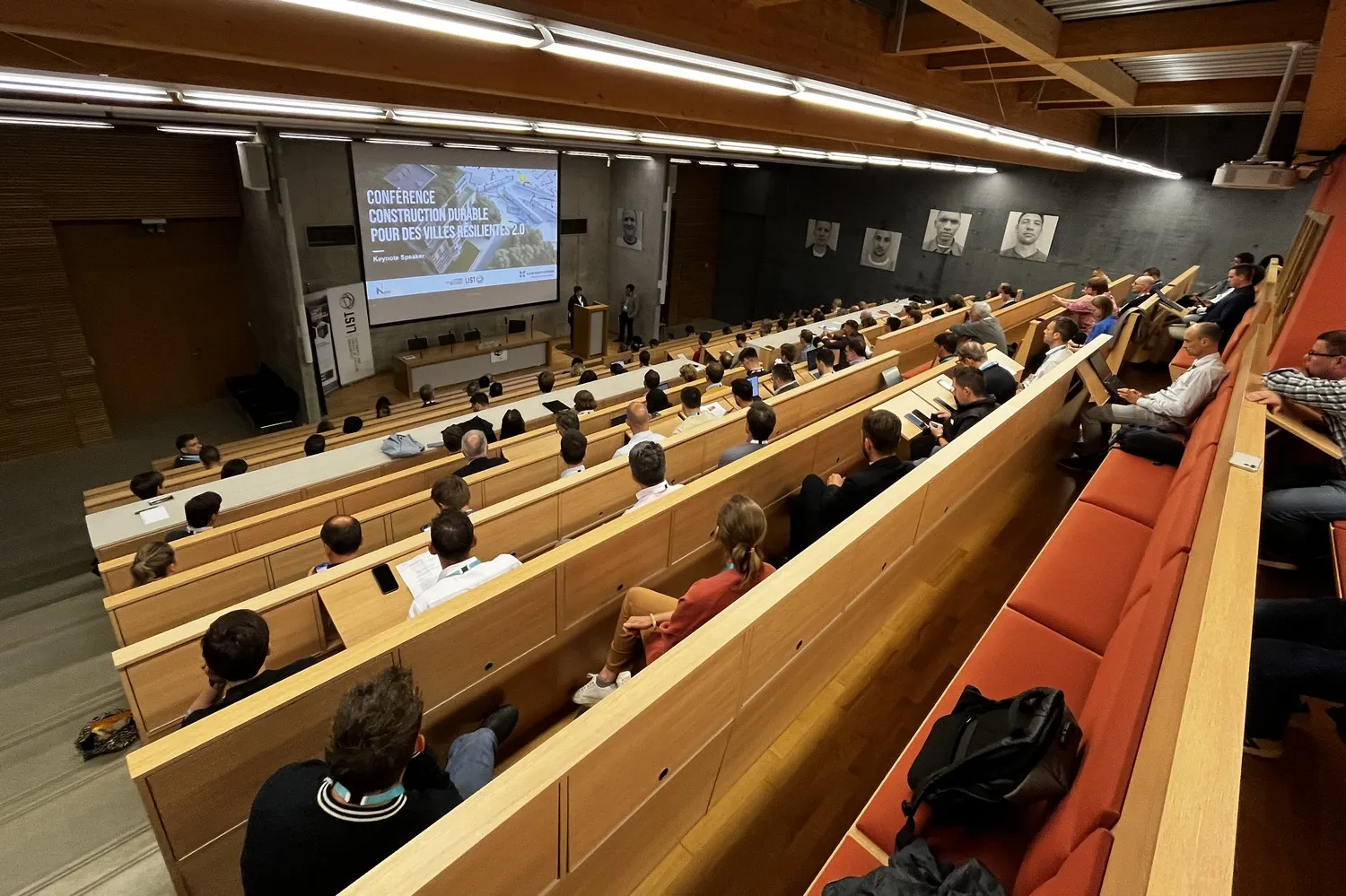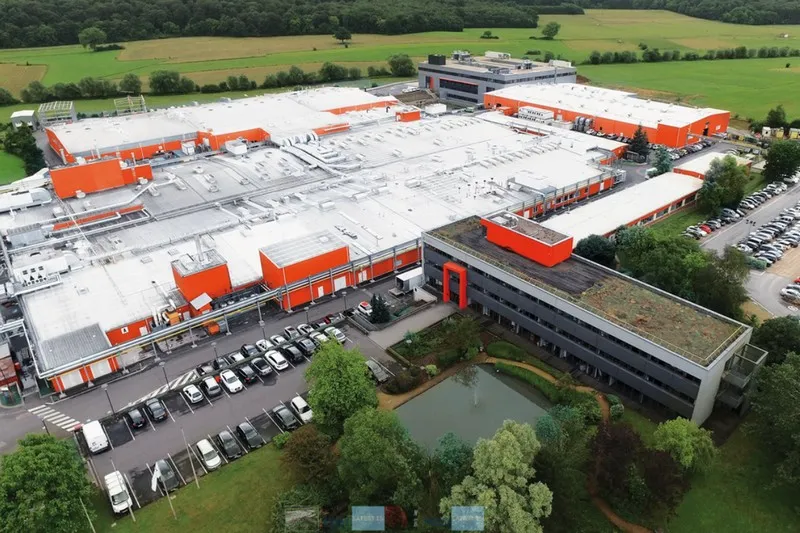

Construction methods will need to adapt
The "Sustainable Construction for Resilient Cities 2.0" conference on 23 May highlighted the need to rethink processes and habits. A collective effort is required.
 Jean-Michel Gaudron
Jean-Michel Gaudron
Another key objective, highlighted at the opening session by Lucien Hoffmann, Director of the Environment Department at the Luxembourg Institute of Science and Technology (LIST), was to identify the sector's priorities and opportunities to unite initiatives to accelerate the transition to more sustainable construction.
This event, which brought together some 180 people on 23 May 2024 at the Neobuild building in Bettembourg, was jointly organised by Neobuild, LIST and Luxinnovation. This partnership symbolised one of the key themes addressed in the various discussions: collaboration and cooperation between all stakeholders, whether public or private.
 Regulatory support
Regulatory support
This becomes evident when considering the extensive scope of the building value chain, from the initial production of materials to the deconstruction of buildings, including the construction itself.
Each link in this chain impacts the environment. "The challenge is to support companies and public authorities in developing solutions, accessing new knowledge in strategic areas, and working on innovation lines with regulatory support," explained Paul Schosseler, Director of Sustainable Construction and Circular Economy at the Ministry of the Economy.
He believes this challenge should be met by combining three types of tools: the legislative and normative framework, taxes and subsidies, and knowledge management. The new European directive on the energy performance of buildings, adopted last March, imposes a very tight schedule, as all new buildings must be zero-emission from 2030 (and even 2028 for new public buildings).
The "Low-Carbon Construction Roadmap" presented by the government at the beginning of last summer reflects this approach.
The social dimension
Beyond these purely "technical" standards, the human aspect must also be considered at both ends of this chain. "There is a real societal dimension in being able to provide a healthy environment for building users," said Pit Kuffer, delegate of the Ordre des Architectes et des Ingénieurs-conseils (OAI). “Solutions must be found to involve workers and employees in decision-making processes. In addition to the financial value created, a price should be placed on social value."
Moreover, the issue of resources is becoming increasingly pressing in the sector, as observed by Max Didier, administrator of the Groupement des Entrepreneurs. "In the medium term, we fear a real problem of resource availability within 3-4 years. Many employees have left the sector to do something else or have left the country. We are talking about developing new housing in the coming years, but will we still have the resources to do it?"
Inflation of constraints
As the construction sector faces a challenging period, with a sharp rise in bankruptcies and soaring prices, many speakers believe it is time to change paradigms and habits. "We cannot continue in the same way and want to solve problems with the same solutions that created them," warned Mr Kuffer.
Samuel Majerus, Partner at LSC and Managing Director at LSC-ENV, observed the inflation of constraints: "A project owner must juggle many different objectives and visions. They must be as sustainable as possible and as cheap as possible, while complying with regulations and, ultimately, proposing a house that can be sold! These are contradictory objectives... Choices must be made based on the initial objectives and adhered to, without falling back into bad old habits at the end of the project."
 Coexistence of timelines
Coexistence of timelines
In this context, the research dimension is particularly important. For many years, LIST has been working on projects related to the use of digital technology in construction, life cycle analysis of buildings, circular economy, and smart and bio-based materials.
For example, it is involved in the European project "SmartBuilt4EU – The European Smart Building Innovation Platform," which aims to facilitate the exchange of information between EU-funded projects and national initiatives in the field of smart buildings.
There, too, challenges are not lacking. "Luxembourg missed the digitalisation shift 15 years ago," said Sylvain Kubicki, Lead Research and Technology Associate at LIST, regretfully. "This is obviously a problem, as this digitalisation was supposed to be quite rapid and allow us to go further, be more efficient and faster. This is now a hindrance to innovation efforts. Additionally, another dimension specific to the research field is the timeline of research programmes, which does not always align with construction projects. It is sometimes difficult to make the two coexist."
Value the efforts of companies
However, according to Julien Bertucci, Head of Sustainable Development and Innovation at SNHBM, there is no doubt that "it is when we are going through a crisis that we need to innovate the most. And it is through digitalisation that we will invent new technical and technological sources. Hence the need to implement more reference pilot projects, also relying on European funding."
In any case, as summarised by Bruno Renders, General Delegate Administrator at the Economic Development Council for Construction, "Construction methods will need to adapt. We must now value the efforts of companies that demonstrate the full extent of what is possible."







